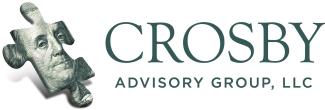
Back to School
In our last newsletter we discussed the perils and pitfalls of rushing to get assets out of your name in the event you need long-term care (nursing home). We got a lot of feedback on that one. If you did not call our office but have questions, I do my best to answer them (briefly) below. In this newsletter we also discuss how we are positioned if inflation is indeed slowing, business growth, e-bikes, market commentary by our own Derek Ballinger and Disney streaming. Enjoy your Sunday! It’s going to be an amazing week.
Planning: Is a Trust Right for Me?
Estate planning is a crucial part of financial planning, but it is often neglected, because let’s face it, we always believe we have plenty of time. The basic and most utilized document in estate planning is the Will. In a nutshell, the Will sets forth your wishes regarding the distribution of your property and determines care for minor children. Anyone with dependents should have a Will because you don’t want the State making decisions, but the key is to make sure it remains updated as your life, and the people you surround yourself with, change.
When is a Trust appropriate? That depends on what you want to accomplish. There are several different kinds of Trusts, each with their own purpose. The most common Trusts we see for basic estate planning are Revocable and Irrevocable Trusts. Revocable Trusts are just as they sound: you can dissolve them. Since they can be dissolved at any time, Revocable Trusts don’t help us if our goal is to safeguard assets from Medicaid spend down rules if we need long-term care (nursing home). Revocable Trusts are very good at governing assets after death and avoiding probate costs as well as keeping asset transfers off public record.
If your goal is to safeguard assets from long-term care costs, there are several options. The least expensive to implement is simply transferring assets out of your name. For the assets not to be counted when applying for Medicaid, the transfer must have taken place a minimum of 5 years ago. There is a clear danger in transferring assets. The biggest horror story I heard was from an estate planning attorney who told me an individual had transferred her home to her married daughter. When the daughter passed away unexpectedly, the individual who transferred her home got an eviction notice from her former son-in-law. She had no power to fight the eviction notice because the home was now technically his.
It is possible to insure against Medicaid through long-term care insurance policies. The major downfall to these policies is that there is a chance you could pay into them for many years and never need the coverage. Additionally, insurance companies who provide long-term care policies are often forced to increase their rates as the costs of long-term care facilities continue to escalate.
A third option is an Irrevocable Trust. As the name implies, once you place assets in an Irrevocable Trust, it can’t be undone. As a result, individuals typically do not rush to place investment accounts, bank accounts or assets that they will need to produce retirement income in an Irrevocable Trust. A primary home is often the first asset that is placed in an Irrevocable Trust because the grantor can live in the home for the rest of their lives and even receive tax breaks if the home is sold during the grantor’s lifetime. Since an Irrevocable Trust can’t be undone, they can be powerful tools for safeguarding assets from Medicaid spend down rules, if the asset was transferred into the Trust 5 or more years before applying for Medicaid.
The decision to place assets in an Irrevocable Trust is a highly personal decision and should not be made without much consideration.
Crosby Advisory Group does not create Trusts, but if you do not have an attorney, we can recommend what we feel are knowledgeable, reasonably priced estate planning attorneys if you need assistance. Crosby Advisory Group does not receive any compensation from attorneys or law firms.
Investing: More Exciting the Second Time Around!
We received updated inflation data on Wednesday showing inflation year over year rose 8.5% in July. The reaction to 8.5% in August was much more joyous than in March when inflation hit 8.5% for the first time in 40 years. The joy came from the fact that the inflation rate appears to be slowing from June’s 9.1%. Our politicians even spun the news as saying there was no inflation in July :) - I can’t possibly make this up.
Joking aside, while 8.5% inflation is still unacceptable, we are seeing what we need to be seeing, and that is the inflation rate slowing. If we are truly heading into a cycle of slowing inflation, we feel strongly that longer duration bonds are attractive again. In the last newsletter we discussed how we believe much of the future rate increases could have been priced into the decline we saw from January to June in long duration bonds (TLT). We stated the factor that could change that hypothesis is if inflation remained “sticky” and the Federal Reserve is forced to increase rates faster and longer than initially expected. So, the fact that the rate of inflation seems to be slowing is a welcome sign. While items like food, rent and electricity continued to increase, the major cause for a reduction in the inflation rate as measured by the Consumer Price Index (CPI) was a reduction in the gasoline index which fell 7.7% in July. The lowering of fuel cost is key to taming inflation because fuel cost gets passed onto other goods we purchase.
Our portfolios represent cautious optimism. July and the first part of August have been kind, but we understand that investment markets don’t move in a straight line. We expect further fluctuations as the Federal Reserve is still very far away from its target inflation rate of 2%, which means further interest rate increases are ahead of us. In addition, we still have quantitative tightening (decreasing money supply), Russia, China, and depleting oil reserves. While we are not yet willing to increase our exposure to pure growth stocks, we have increased position in value (dividend paying stocks), defensive sectors like consumer staples and utilities and mid to long-duration treasury bonds. With interest rates now off historic lows, the yield (dividends and interest) generated by the strategies is attractive and helpful to long-term accumulation.
Business Growth with Laser Focus
With roughly a quarter and a half remaining in 2022, businesses are making final adjustments to meet year end goals. With increased costs of doing business, getting the most out of marketing and sales strategies is imperative. Whether your business has a new product launch, retooling of its marketing plan or are just simply looking to add more prospects into your sales funnel, Carly Snyder of CAG Marketing is quite possibly your single greatest resource. She has worked with companies like Cisco, Microsoft, AT&T, Rockwell Automation and Steris to name a few, and she now brings her marketing and business growth insights to us. I make many predictions in my craft, but one that I am certain on is your interaction with Carly will leave you with laser focus set on present and future growth. I had Carly critique our marketing plan in 2019, and I walked away with more great ideas than I could implement in one year. Keep the great ideas coming, as we grow, we will find ways to implement them.
Insurance: e-Bikes? Verify Coverage
e-Bikes (electric bikes) have become popular recreational vehicles. These bikes are a combination of electric motor and manual pedal propulsion. Many e-Bike owners assume their homeowner’s insurance or personal auto insurance automatically pick up coverage for the operation of these vehicles, but we have found many insurance companies are slow to adapt their policies to provide proper liability coverage. If you are an owner of an e-Bike, we encourage you to contact our office to review the level of liability coverage your insurance policies provide. Contact Julie Maglott at jmaglott@nmdinsurance.com
Market Commentary: Is Good News Actually Good News? (Derek Ballinger)
In recent weeks, we have been discussing on our podcast that good news has been interpreted as bad news and vice versa. Strong economic data and strong earnings in isolation were indications to financial markets that we are in the early innings of tighter monetary conditions by the FED and the year-to-date drawdowns were a beginning of a more substantial drawdown and recession. In a rather surprising turn of events, if you compile all of this data together it has led some investors to rethink their bearish outlook for 2022.
July is an interesting example and illustrates the point well. The July jobs report was a massive upward surprise in jobs and shows the strength of the labor market and how workers are taking on new roles. In addition, the cost to employ those workers was increasing. In a recession, you would expect negative revisions to labor data, less hiring, more unemployment, and employers not over-reaching on budgets to pay increasingly higher wages.
For the month of July, the Bureau of Labor Statistics reported an additional 528,000 non-farm jobs and the unemployment rate decreased to 3.5%. Average hourly earnings rose 5.2% from last year but that still trailed the Consumer Price Index (CPI) by about 4%.
We also saw better-than-expected earnings from U.S. corporations. While some reported lackluster performance, the results were much better than anticipated. Many bearish investors were waiting for companies to issue weaker profit outlooks for the rest of 2022. Apple announced they beat earnings with no issuance of weaker guidance, and Disney announced a 10% earnings beat and massive growth in their streaming platform. Chip makers like Qualcomm beat earnings and announced new investments and projects for their chips.
These were seen as a positive surprise by a wide margin, markets interpreted this news as somewhat negative since the FED is looking for data coming out of the labor market to look for signs to slow the pace of fiscal tightening. With a strong labor market gives the FED some support for tighter financial conditions. With stronger than expected corporate earnings it shows we are far away from a recession that can tame inflation and bring it down to normal levels.
This past week, however, is when investors started to interpret the macro picture differently. The CPI data for July came in under expectations which hasn't happened since February of 2021. Consumer prices increased 8.5% from July last year when an 8.7% increase was expected. Largely driven by a decrease in energy prices, specifically the price of oil and natural gas. This gave credence to the “soft landing” claims made by the FED and to claims made by the White House that we aren't in a recession.
If you look at all these data points together, it is a stark contrast to a narrative that we aren't going to get prices to come back down without a significant slowdown. Strong labor data, strong earnings, and a better-than-expected inflation report doesn't mean to offload all your hedges and its full steam ahead back to all-time highs. The energy basket in the CPI decreased by 4.5% but food and Core CPI both increased. If markets are too quick to interpret this month’s report as the end of inflation, then we could see a rise in consumer sentiment, which creates a rise in demand which will inflate the parts of the CPI that caused the better-than-expected result. This news was clearly a breath of fresh air in the storm of bad news in 2022. July is hopefully a sign that we are going to have a much shorter and shallower recession than originally thought. It is just too early to make that call based on one month of marginally improved data.
Back to School
“One must maintain a little bit of summer, even in the middle of winter” -Henry David Thoreau
Long after we are done with formal school, the end of the summer still stirs a feeling of change. I like Thoreau’s quote because it implies that we have the ability to take all good things we experience and bring them with us as we move into the unknown. Equally as important, we also can cut all things that don’t serve us. It was the last day of summer, I’m not sure the year, but my girls were half the age they are now. We were sitting in the trampoline after an exhausting (for me) jump session and I said let’s make a promise that we will keep summer going throughout the year. Selfishly, I didn’t want them to grow up. We all put our pinkies in to swear. Apparently, I had a bit of water in my eyes, it wasn’t tears because I don’t cry, and my middle daughter said, “Hey look Dad’s a big baby.” It was amazing because while I was the one sad, trying to pass on courage to my children, it was my daughter that made me laugh and passed on courage to me. So once again as school comes back in session, we take the amazing of summers past and bring it with us into whatever lies ahead. Be courageous.
In Case you Missed it
Disney streaming services surpassed Netflix for total streaming subscribers. Disney is a stock that has gotten beaten up in 2022 and has been the center of some controversy, but from a growth perspective appears to have a clear path to growth and profitability. Their theme park revenue was up over 70% year over year.
Disclaimer: This newsletter represents the opinions of Crosby Advisory Group. It is for informational purposes and does not replace direct investment advice. Investing involves risk of loss and you should carefully consider all risks and fees before investing. Not all investments are suitable for all investors. Crosby Advisory Group is a registered investment advisor. Crosby Advisory Group has ownership interest in NMD Insurance and CAG Marketing. At any time, you can request our forms ADV2A and 2B which go into the business practices and qualifications of Crosby Advisory Group.
Follow us on Social Media
Facebook: Crosby Advisory Facebook Instagram: Crosby Advisory Instagram

